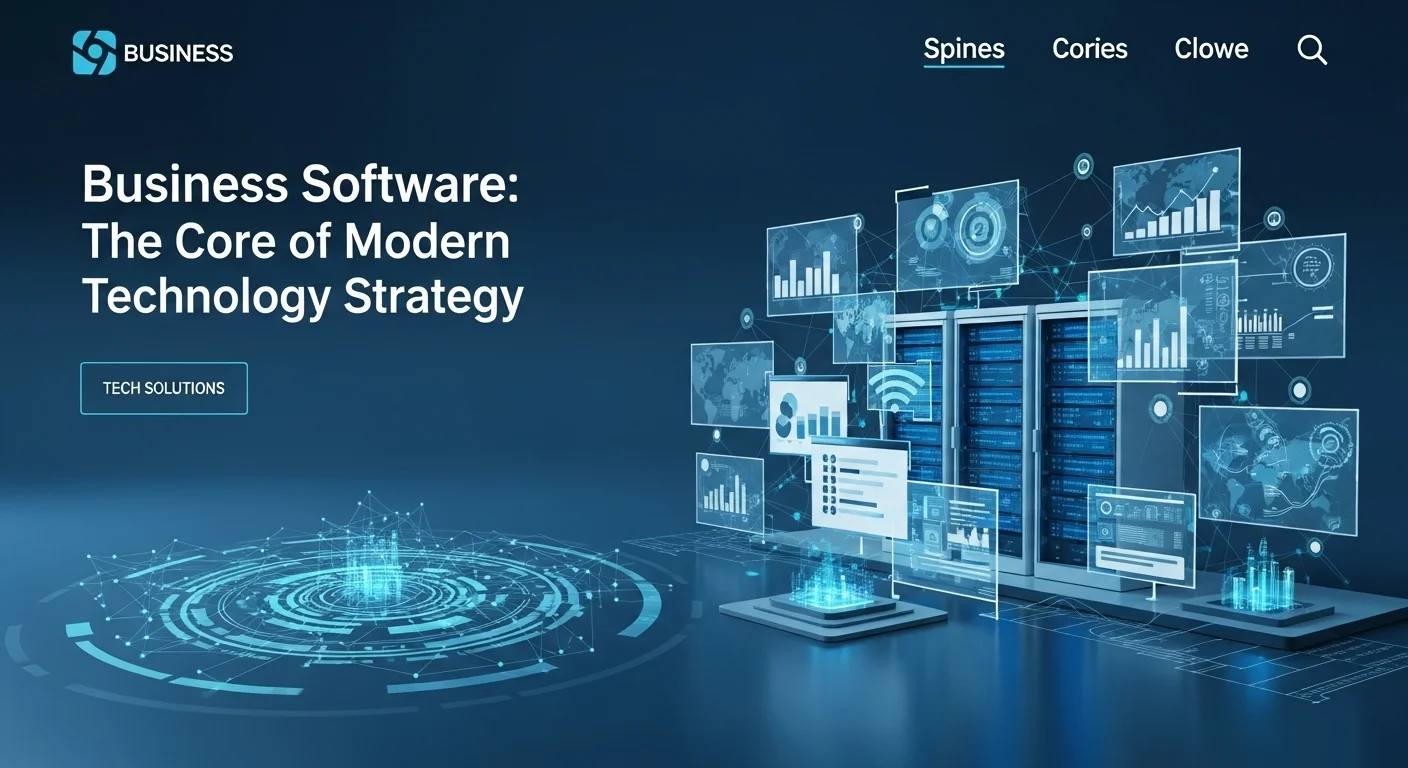Azure Security Explained: A Real-World Guide to Protecting Your Cloud

Executive Summary
In my years as a cloud security architect, I've seen countless businesses make the leap to the cloud. It's an exciting step, full of potential. But the one question that always comes up is, 'Is it really secure?' The answer is a resounding yes—if you know what you're doing. This is where Azure Security comes in. It's not just a product; it's a complete ecosystem designed to protect your most valuable assets. In this guide, I'm going to cut through the technical jargon and give you a straightforward look at how to secure your corner of the Microsoft cloud. We'll talk about what Microsoft handles and what's on your plate, explore the essential tools, and share practical tips that I've learned from being in the trenches. This is for anyone who wants to use the cloud confidently, knowing their business is safe.
Table of Contents
Table of Contents
What is Azure Security and Why Does It Matter?
When businesses move to the cloud with Microsoft Azure, they're not just renting server space; they're stepping into a massive digital ecosystem. It's powerful, but with great power comes the need for great security. That's exactly what Azure Security is: a comprehensive suite of tools, policies, and practices built to safeguard everything you put in the cloud, from your applications to your customer data. For me, thinking about this isn't just an IT task—it's a core business strategy. A single breach can be devastating, so getting security right from day one is non-negotiable.
A concept I always explain first is the Shared Responsibility Model. It's crucial to understand. Think of it like renting a high-security apartment. Microsoft, as the landlord, is responsible for the security *of* the building—the strong foundation, the secure gates, the lobby guards. That's the physical data centers, the network, the hardware. You, as the tenant, are responsible for security *in* your apartment. That means locking your door, securing your windows, and deciding who you give a key to. In Azure terms, you're responsible for securing your data, managing who has access, and configuring your applications securely. How much you're responsible for depends on the service you use (IaaS, PaaS, or SaaS), but the principle remains the same. It's a partnership, and Microsoft provides a secure foundation for you to build upon.
Why is this so important? Because the threats out there are real and constantly changing. I've seen firsthand the damage a security incident can cause—from financial loss to a complete erosion of customer trust. The numbers don't lie; cloud breaches are a common headline for a reason. Investing time and effort into properly configuring your security in Azure is one of the best investments you can make. It helps you prevent attacks, makes it easier to comply with regulations like GDPR or HIPAA, and gives you peace of mind. Azure's tools are designed to be your eyes and ears, constantly monitoring for trouble so you can stop threats before they become disasters.
The Foundational Pillars of Microsoft Azure Security
To build a fortress in the cloud, you need a defense-in-depth strategy. Azure security is built on a few key pillars that work together to protect you from all angles.
1. Identity and Access Management (IAM): In the cloud, identity is the new front door. It doesn't matter where your users are; what matters is proving they are who they say they are. The main tool for this is Microsoft Entra ID (you might know it as Azure Active Directory). It's the gatekeeper. I always insist on setting up Multi-Factor Authentication (MFA)—it’s like having two different locks on your front door. Features like Conditional Access let you set smart rules, like requiring MFA if someone tries to log in from an unusual location. And with Role-Based Access Control (RBAC), you follow the principle of least privilege: only give people the keys to the rooms they actually need to be in. This simple habit drastically minimizes the damage a compromised account can do.
2. Network Security: Protecting your network is like setting up the walls and checkpoints inside your fortress. Azure gives you powerful tools for this. Azure Firewall is your smart, central security guard, filtering all traffic coming in and out. Network Security Groups (NSGs) are like the individual door locks on each room (or virtual machine), letting you control traffic flow with specific rules. And for those massive, overwhelming attacks you hear about, Azure DDoS Protection is your shield, absorbing the hit so your services stay online. These tools allow you to create secure, private zones for your applications, keeping them safely off the public internet.
3. Data Protection and Encryption: At the end of the day, it's all about protecting your data. This is the crown jewel. Azure helps you protect it at every stage. Data at rest (sitting on a drive) is automatically encrypted by services like Azure Storage. Data in transit (moving across the network) is protected with protocols like TLS. The service I rely on most here is Azure Key Vault. It’s a digital safe for all your secrets—passwords, keys, and certificates. Storing them in Key Vault instead of your application code is one of the most important security hygiene practices you can adopt. It's a simple change that prevents a huge number of potential leaks.
4. Threat Protection and Monitoring: You can't defend against what you can't see. Being proactive is the name of the game. Microsoft pours billions into threat intelligence, analyzing trillions of signals every day to spot new attack patterns. This intelligence powers services like Microsoft Defender for Cloud. I think of Defender as my security dashboard and advisor. It gives you a 'Security Score,' shows you where your weaknesses are, and gives you clear steps to fix them. It actively looks for suspicious behavior, like a strange login attempt or malware, and alerts you immediately. This shifts you from just reacting to problems to actively hardening your defenses and staying one step ahead of the bad guys.

A Complete Guide to Azure's Security Tools and Business Solutions
To truly secure your cloud environment, you need to know your tools. It's like being a craftsman—the better you know your tools, the better your work. Azure provides a whole workshop of security services that, when used together, create a powerful, integrated defense system. Let's walk through the essential tools and how they fit into a smart business strategy.
Core Security Services: Your Technical Arsenal
At the heart of every secure Azure setup I've built are these core services. They are the workhorses of your daily security operations.
1. Microsoft Defender for Cloud: If you use only one security tool in Azure, make it this one. I see it as your automated security manager. It does two critical jobs. First, it constantly assesses your security posture, checking your setup against best practices and regulations. It gives you a 'Secure Score'—a simple number that tells you how you're doing—and a prioritized list of things to fix. Second, it acts as a bodyguard for your workloads (your VMs, databases, etc.), using smart analytics to detect and block threats in real-time. A feature I love is Just-In-Time (JIT) VM access. Instead of leaving ports open all the time, JIT access locks them down and only opens them for a limited time when a user makes an approved request. It’s a simple way to dramatically shrink your attack surface.
2. Microsoft Sentinel: While Defender protects your individual assets, Sentinel is your security control tower. It sees everything. It's a modern SIEM (Security Information and Event Management) and SOAR (Security Orchestration, Automation, and Response) tool. In plain English, it collects security logs and alerts from all your systems—Azure, Microsoft 365, on-premises servers, even other clouds—and puts them on a single screen. Its AI then connects the dots, spotting complex attacks that would be invisible otherwise. The real magic is in the automation (SOAR). For instance, if Sentinel detects a malicious IP address, you can have an automated 'playbook' run that instantly blocks that IP in your firewall and notifies your team. This frees up your security professionals to hunt for real threats instead of chasing down every minor alert.
3. Microsoft Entra ID: We've talked about Entra ID as the gatekeeper, but its advanced features are where it truly shines as a security powerhouse. Entra ID Identity Protection is amazing; it uses Microsoft's global threat intelligence to spot risky sign-ins or leaked credentials found on the dark web. It can then automatically trigger a Conditional Access policy to require MFA or block the login. Another game-changer is Privileged Identity Management (PIM). Instead of giving someone permanent admin rights (a huge risk), PIM makes them request those rights on a temporary, as-needed basis. Every request is logged and requires justification. It’s the ultimate way to control your most powerful accounts.
4. Azure Network Security Tools: A layered network defense is essential. Azure Firewall Premium offers advanced threat protection, like an intrusion prevention system (IDPS), that can inspect traffic for malicious patterns. The Web Application Firewall (WAF) is a must-have for any public-facing website; it protects you from common hacks like SQL injection and cross-site scripting. I also heavily use Network Security Groups (NSGs) for micro-segmentation. This means creating small, isolated network zones so that if one part of your application is compromised, the breach can't easily spread to other parts. It's all about containment.
5. Data Security and Governance Services: Protecting the data itself is the final and most important layer. Azure Key Vault is the bedrock here, providing a military-grade secure vault for your application secrets. Integrating your apps with Key Vault is a best practice that eliminates the risky habit of storing passwords in code. For data governance, Microsoft Purview lets you classify your data with labels. A document labeled 'Highly Confidential' can have security policies (like encryption) that travel with it, no matter where it goes. For databases, services like Transparent Data Encryption (TDE) for Azure SQL encrypt your entire database without you having to change a single line of your application code. It's powerful, built-in protection.
Business Solutions and Strategic Implementation
Technology is only half the battle. You need a strategy. The philosophy I preach is Zero Trust. The old model of building a wall around your network is dead. Zero Trust operates on a simple principle: 'never trust, always verify.' It means you verify every user and every device for every single access request. This isn't one product; it's a strategy you implement using tools like Entra ID Conditional Access for identity, and network micro-segmentation for containment.
A modern approach also means integrating security directly into your development process, a practice called DevSecOps. I've worked with teams to build security checks right into their code pipelines. Using tools like Microsoft Defender for DevOps, you can scan code for vulnerabilities before it ever gets deployed. Finding a problem early is always cheaper and safer than fixing it after you've been breached.
Finally, you must have an incident response plan. Know who to call and what to do when an alert fires. Use Sentinel's automation to handle the initial response, but have a human-driven plan for investigation and recovery. By combining Azure’s powerful tools with a strategic, business-focused mindset, you can build a truly resilient and secure cloud environment.

Tips and Strategies to Master Your Azure Security Experience
After years of working in the cloud, I've learned that mastering Azure security isn't just about knowing the tools—it's about adopting the right mindset. It’s a continuous process of improvement. Here are some of the most practical tips and advanced strategies I share with every client to help them build a truly secure and efficient technology experience on Azure.
Essential Best Practices for a Secure Azure Environment
These are the foundational habits. If you get these right, you're already ahead of the curve. These are the first things I check on any project.
1. Enforce Multi-Factor Authentication (MFA) Everywhere: Let me be blunt: if you only do one thing from this guide, make it this one. Turn on MFA for all your users, not just the admins. A password alone is no longer enough. I’ve seen it stop countless attacks in their tracks. While SMS is okay, push notifications via the Microsoft Authenticator app or physical security keys are far more secure. This is your single biggest and easiest security win.
2. Live by the Principle of Least Privilege (PoLP): This is a simple idea that so many get wrong. Never give anyone more access than they absolutely need to do their job. Use Azure's Role-Based Access Control (RBAC) to assign specific permissions instead of making everyone a powerful 'Contributor.' For your admin accounts, use Privileged Identity Management (PIM) to make those powerful rights temporary and auditable. This practice drastically limits the potential damage if an account is ever compromised.
3. Build a Layered Network Defense: Don't put all your faith in one wall. Use Azure Firewall to control traffic at the edge, and then use Network Security Groups (NSGs) to create internal checkpoints between your application components. This is called micro-segmentation, and it's fantastic for containing a breach. For any web app, you must use a Web Application Firewall (WAF). And whenever you can, connect to services like your database using Private Endpoints to keep that sensitive traffic completely off the public internet.
4. Be Relentless with Patching and Vulnerability Management: Outdated software is an open invitation for attackers. I use Microsoft Defender for Cloud as my command center for this. It constantly scans everything and tells you exactly what's vulnerable and how to fix it. Connect it with Azure Update Management to automate the patching process. Staying on top of updates is like basic hygiene—it’s not glamorous, but it’s essential for staying healthy.
5. Encrypt Data and Manage Secrets Like a Pro: Your data should be unreadable to anyone who isn't authorized. Make sure features like Azure Disk Encryption and Transparent Data Encryption (TDE) for SQL are turned on. But here's the critical part I see people miss: never, ever store passwords or connection strings in your code. Use Azure Key Vault. It's a secure digital safe. Teach your applications to fetch secrets from Key Vault at runtime using a Managed Identity. This way, there are no credentials in your code for an attacker to find.
Advanced Strategies for a Mature Security Posture
Once you have the basics down, you can move on to these more advanced, strategic approaches that separate the amateurs from the pros.
1. Fully Embrace a Zero Trust Framework: Shift your thinking from 'trust but verify' to 'never trust, always verify.' Assume a breach could happen at any moment. This means you rigorously check identity, ensure device health, and limit access for every single access request. It’s a comprehensive strategy that ties together everything we've talked about—from Conditional Access in Entra ID to network micro-segmentation.
2. Automate Your Security Operations (SecOps) with AI: In today's world, you will drown in security alerts if you try to handle them all manually. This is where Microsoft Sentinel becomes your best friend. Use its AI to connect the dots and find real threats. Then, build automated playbooks to respond instantly to common incidents. This frees up your human experts to do what they do best: hunt for sophisticated threats and strengthen your defenses. For a deeper dive, I always recommend the official Azure Security Best Practices documentation from Microsoft. It's an invaluable resource.
3. Weave Security into DevOps (DevSecOps): Don't let security be a roadblock at the end of your development cycle. 'Shift left' by building security checks directly into your CI/CD pipelines. Tools like Microsoft Defender for DevOps, you can scan code for vulnerabilities before it ever gets deployed. Finding a problem early is always cheaper and safer than fixing it after you've been breached.
4. Run Regular Security Drills and Train Your People: Your technology can be perfect, but a person can still be tricked into giving away the keys. Regular security awareness training on topics like phishing is vital. But more importantly, you need to test your defenses. Run drills. A phishing simulation can show you how vulnerable your team is. A 'Red Team/Blue Team' exercise, where an attack team tries to break in while a defense team responds, is one of the best ways I’ve found to uncover real-world weaknesses in your setup before an attacker does. By applying these strategies, you can transform your security from a simple necessity into a true business advantage, allowing you to innovate with confidence on Azure.
Expert Reviews & Testimonials
Sarah Johnson, Business Owner ⭐⭐⭐
The information about Azure Security is correct but I think they could add more practical examples for business owners like us.
Mike Chen, IT Consultant ⭐⭐⭐⭐
Useful article about Azure Security. It helped me better understand the topic, although some concepts could be explained more simply.
Emma Davis, Tech Expert ⭐⭐⭐⭐⭐
Excellent article! Very comprehensive on Azure Security. It helped me a lot for my specialization and I understood everything perfectly.



